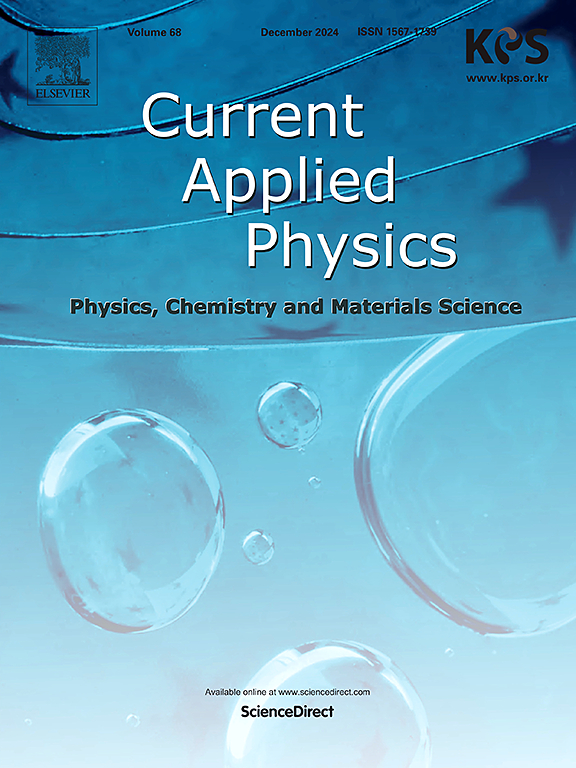Design and fabrication of multi-band SRR sensors using 3D printing for liquid characterization
IF 2.4
4区 物理与天体物理
Q3 MATERIALS SCIENCE, MULTIDISCIPLINARY
引用次数: 0
Abstract
A microstrip line split ring resonator (SRR) sensor is introduced for liquid profiling. The sensor features a microstrip transmission line with two identical SRRs, detecting differential permittivity by loading liquid samples onto the SRRs.3D-printing stereolithography technology with high temperature resin is used to build the sensors. The printed sensor undergoes metallization process by depositing titanium and copper layer, followed by copper electroplating. Different Ti Cu sputtering time was studied to determine optimum parameters for sensor application. It only necessitates a minimal sample volume for detection as any changes in the sample loading induces a change in the resonance frequency of the SRR. The sensors exhibited strong performance, distinguishing between chemicals like methanol, IPA, and silicone oil based on resonance frequency shifts, with the 3.5 GHz sensor achieving the highest sensitivity (1.09 %). The utilization of additive manufacturing for producing 3D-printed sensors could meet the demand for quick and cost-effective microwave sensors.

3D打印液体表征多波段SRR传感器的设计与制造
介绍了一种用于液体分析的微带线分环谐振器(SRR)传感器。该传感器具有带有两个相同srr的微带传输线,通过将液体样品加载到srr上来检测差分介电常数。传感器采用高温树脂3d打印立体光刻技术。将打印出来的传感器进行金属化处理,先沉积钛和铜层,再电镀铜。研究了不同的Ti - Cu溅射时间,以确定传感器应用的最佳参数。它只需要最小的样品体积进行检测,因为样品负载的任何变化都会引起SRR共振频率的变化。传感器表现出很强的性能,根据共振频移区分甲醇、IPA和硅油等化学物质,其中3.5 GHz传感器的灵敏度最高(1.09%)。利用增材制造技术生产3d打印传感器可以满足快速、高性价比的微波传感器需求。
本文章由计算机程序翻译,如有差异,请以英文原文为准。
求助全文
约1分钟内获得全文
求助全文
来源期刊

Current Applied Physics
物理-材料科学:综合
CiteScore
4.80
自引率
0.00%
发文量
213
审稿时长
33 days
期刊介绍:
Current Applied Physics (Curr. Appl. Phys.) is a monthly published international journal covering all the fields of applied science investigating the physics of the advanced materials for future applications.
Other areas covered: Experimental and theoretical aspects of advanced materials and devices dealing with synthesis or structural chemistry, physical and electronic properties, photonics, engineering applications, and uniquely pertinent measurement or analytical techniques.
Current Applied Physics, published since 2001, covers physics, chemistry and materials science, including bio-materials, with their engineering aspects. It is a truly interdisciplinary journal opening a forum for scientists of all related fields, a unique point of the journal discriminating it from other worldwide and/or Pacific Rim applied physics journals.
Regular research papers, letters and review articles with contents meeting the scope of the journal will be considered for publication after peer review.
The Journal is owned by the Korean Physical Society.
 求助内容:
求助内容: 应助结果提醒方式:
应助结果提醒方式:


